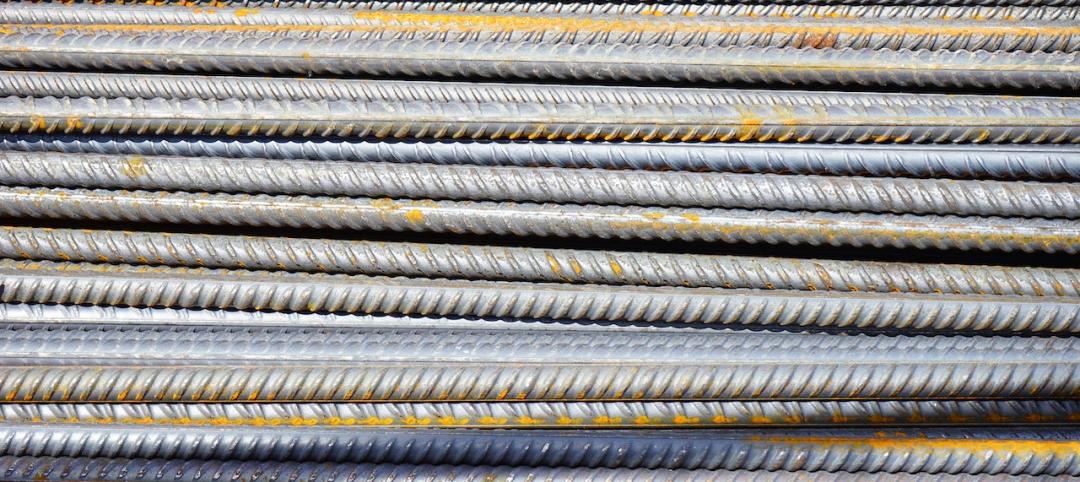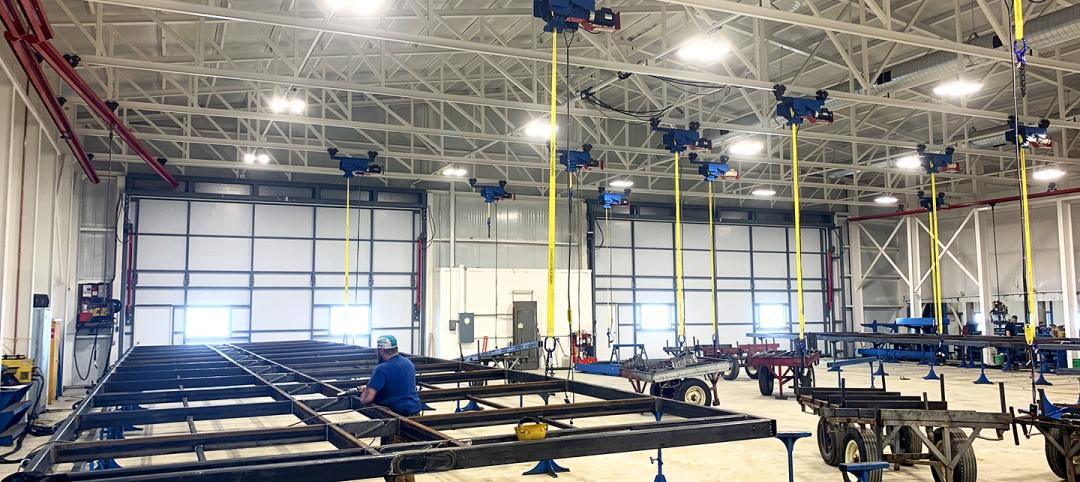The construction materials price index for nonresidential buildings fell 0.3% in April extending the decline since the September index peak to 13.1%. Prices for the mix of materials used in nonresidential construction prices are back to the December 2007 level before the 14% jump in prices from March through September.
The materials price index is expected to decline slowly for a few more months but be rising modestly again by the end of the year and rising more quickly next year, perhaps up 4–5% from the 2009 average.
April's price drop was led by structural steel (7.3%) and plywood (-3.3%). The only significant April price increases were for diesel (20.5%) and nonferrous pipe and tube (20.9%) which had both declined in March. Rising scrap and ore prices mean rising nonferrous product prices for at least several months. The Energy Department reports that diesel pump prices were unchanged from the April to the May price survey week.
| Percent Change in ..... | 1 month | 3 months | 12 months | 3 years |
| Source: Producer Price Index. Bureau of Labor Statistics | ||||
| Construction commodities | ||||
| Cement | 0.8 | -0.2 | 0.0 | 6.1 |
| Construction sand, gravel & crushed stone | 0.5 | 1.4 | 5.5 | 23.1 |
| Softwood plywood | -3.3 | -4.9 | -12.7 | -21.1 |
| Softwood lumber | 1.6 | -2.6 | -10.7 | -32.5 |
| Manufactured materials | ||||
| Gypsum products | -0.2 | -1.2 | 5.3 | -17.5 |
| Diesel fuel | 20.5 | -2.6 | -56.2 | -30.6 |
| Paint | 0.1 | 0.1 | 12.4 | 22.5 |
| Plastic construction products | -0.5 | -0.6 | 3.0 | 1.9 |
| Vitreous plumbing fixtures | 2.3 | 2.4 | 4.2 | -1.9 |
| Ceramic tile | -2.0 | -1.4 | -0.2 | 1.6 |
| Flat glass | -0.4 | -1.0 | 2.9 | 2.7 |
| Hot-rolled bars, plates, and structural shapes | -7.3 | -15.7 | -25.9 | -2.0 |
| Extruded aluminum rod, bar, and other shapes | 1.2 | -4.3 | -26.3 | -18.2 |
| Architectural metalwork | 0.6 | -2.4 | 12.1 | 24.7 |
| Metal plumbing fixtures | 0.5 | 0.2 | 2.2 | 13.1 |
| Builders' hardware | 0.5 | -2.7 | 6.8 | 20.4 |
| Sheet metal products | -0.6 | -3.6 | 0.2 | 9.9 |
| Nonferrous pipe and tube | 20.9 | 26.7 | -28.5 | -1.3 |
| Building brick | 0.5 | -0.2 | 0.1 | 0.8 |
| Ready-mix concrete | -1.0 | -1.9 | 3.4 | 10.7 |
| Concrete block and brick | 0.3 | -0.1 | 3.3 | 10.1 |
| Millwork (window, door, cabinet) | -0.2 | 0.7 | 1.7 | 5.3 |
| Engineered wood products | -1.3 | -3.3 | -2.6 | -14.6 |
| Metal doors, sash, and trim | -0.8 | 0.2 | 5.4 | 9.2 |
| Summary | ||||
| Construction materials (commodity level) | -2.3 | -3.1 | -1.7 | 4.9 |
| Inputs to construction industries | -0.4 | -1.6 | -3.6 | 6.4 |
| Inputs to nonresidential construction | -0.3 | -1.6 | -5.2 | 6.3 |
Related Stories
Mass Timber | Jul 11, 2023
5 solutions to acoustic issues in mass timber buildings
For all its advantages, mass timber also has a less-heralded quality: its acoustic challenges. Exposed wood ceilings and floors have led to issues with excessive noise. Mass timber experts offer practical solutions to the top five acoustic issues in mass timber buildings.
Building Materials | Jun 14, 2023
Construction input prices fall 0.6% in May 2023
Construction input prices fell 0.6% in May compared to the previous month, according to an Associated Builders and Contractors analysis of the U.S. Bureau of Labor Statistics’ Producer Price Index data released today. Nonresidential construction input prices declined 0.5% for the month.
Cladding and Facade Systems | Jun 5, 2023
27 important questions about façade leakage
Walter P Moore’s Darek Brandt discusses the key questions building owners and property managers should be asking to determine the health of their building's façade.
Multifamily Housing | Apr 27, 2023
Watch: Specifying materials in multifamily housing projects
A trio of multifamily housing experts discusses trends in materials in their latest developments. Topics include the need to balance aesthetics and durability, the advantages of textured materials, and the benefits of biophilia.
3D Printing | Apr 11, 2023
University of Michigan’s DART Laboratory unveils Shell Wall—a concrete wall that’s lightweight and freeform 3D printed
The University of Michigan’s DART Laboratory has unveiled a new product called Shell Wall—which the organization describes as the first lightweight, freeform 3D printed and structurally reinforced concrete wall. The innovative product leverages DART Laboratory’s research and development on the use of 3D-printing technology to build structures that require less concrete.
Cladding and Facade Systems | Apr 5, 2023
Façade innovation: University of Stuttgart tests a ‘saturated building skin’ for lessening heat islands
HydroSKIN is a façade made with textiles that stores rainwater and uses it later to cool hot building exteriors. The façade innovation consists of an external, multilayered 3D textile that acts as a water collector and evaporator.
Windows and Doors | Apr 4, 2023
Schweiss Doors erects manufacturing building to showcase new doors
Schweiss Doors, the premier manufacturer of hydraulic and bifold liftstrap doors, erected a new manufacturing facility which will also serve as a showcase for the company’s new “free-standing” header frames.
Windows and Doors | Mar 5, 2023
2022 North American Fenestration Standard released
The 2022 edition of AAMA/WDMA/CSA 101/I.S.2/A440, “North American Fenestration Standard/Specification for windows, doors, and skylights” (NAFS) has been published. The updated 2022 standard replaces the 2017 edition, part of a continued evolution of the standard to improve harmonization across North America, according to a news release.
AEC Innovators | Mar 3, 2023
Meet BD+C's 2023 AEC Innovators
More than ever, AEC firms and their suppliers are wedding innovation with corporate responsibility. How they are addressing climate change usually gets the headlines. But as the following articles in our AEC Innovators package chronicle, companies are attempting to make an impact as well on the integrity of their supply chains, the reduction of construction waste, and answering calls for more affordable housing and homeless shelters. As often as not, these companies are partnering with municipalities and nonprofit interest groups to help guide their production.
Codes | Mar 2, 2023
Biden Administration’s proposed building materials rules increase domestic requirements
The Biden Administration’s proposal on building materials rules used on federal construction and federally funded state and local buildings would significantly boost the made-in-America mandate. In the past, products could qualify as domestically made if at least 55% of the value of their components were from the U.S.
















